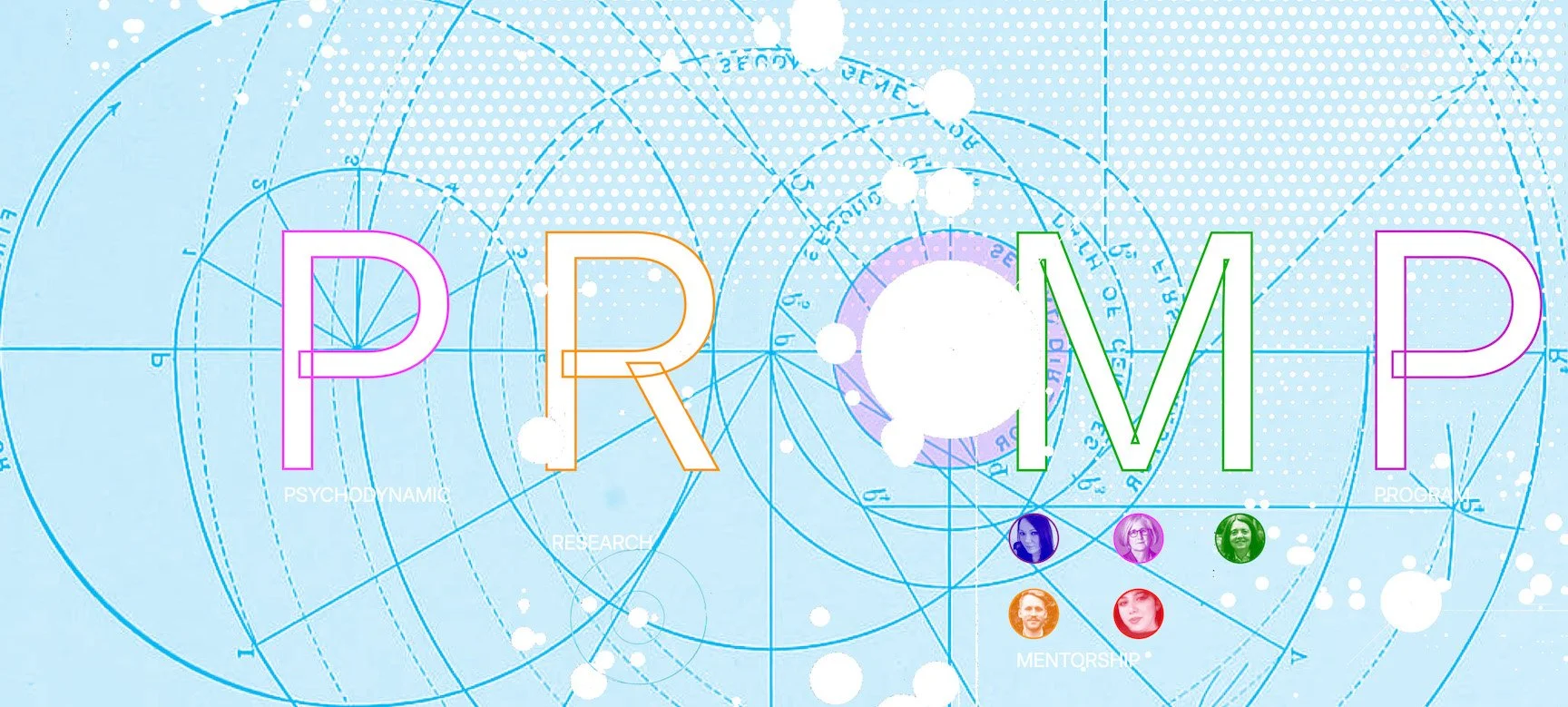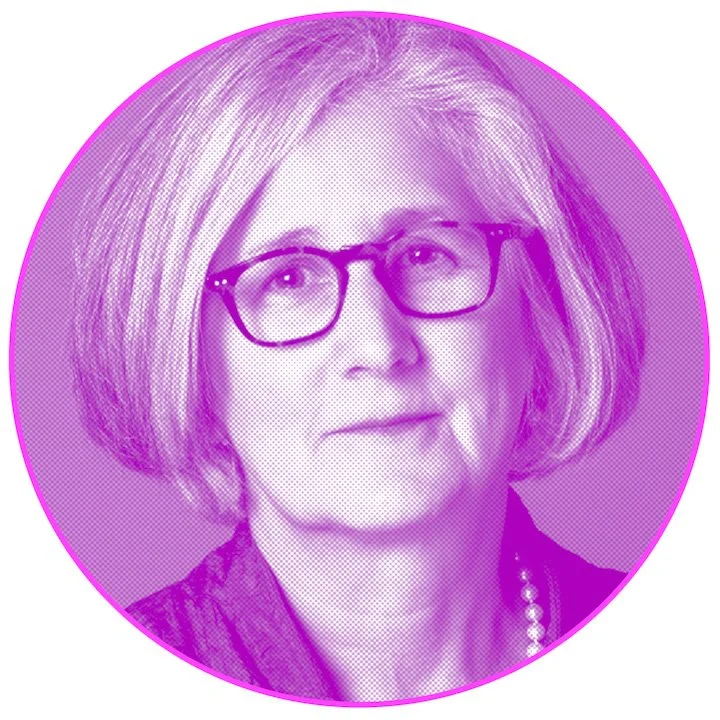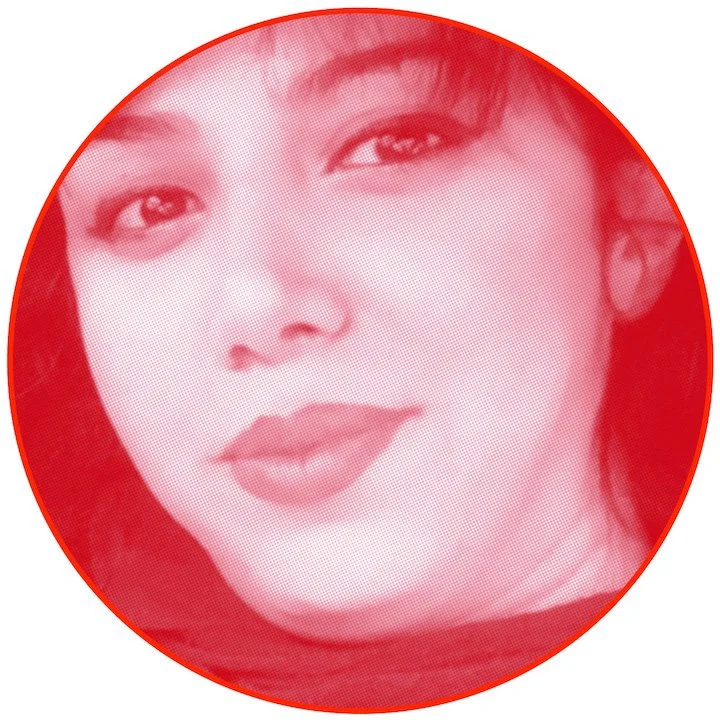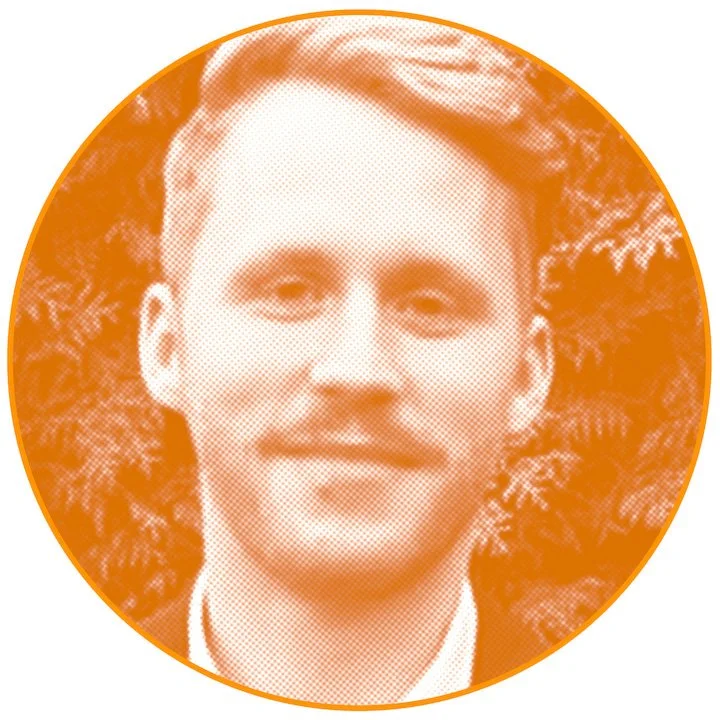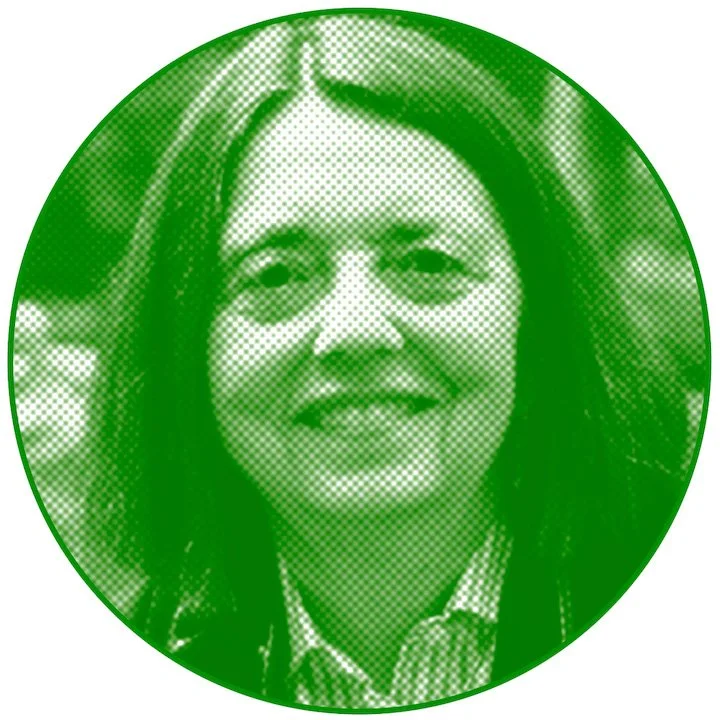Supporting the Science of Psychoanalysis
Meet the people behind a global program cultivating the next generation of psychoanalytic researchers
By Austin Ratnerllustration by Austin Hughes. Headshots courtesy the interviewees.
“The fact is that the public have an insatiable curiosity to know everything, except what is worth knowing,” Oscar Wilde said. He was speaking in the first place of the public appetite for gossip, but also of the aversion to knowing anything serious or hard.
Scientific curiosity, unlike prurience, asks difficult questions. Linda Mayes, Jane Tillman, and Katie Lewis are three women animated by such scientific curiosity, and they are the organizing forces behind the Psychodynamic Research Mentorship Program (PRMP), a colloquy of talented young scholars and sage mentors from around the globe who just may represent the future of psychoanalysis.
A collaboration between the Erikson Institute of the Austen Riggs Center in Stockbridge, Massachusetts, and the Yale Child Study Center in New Haven, PRMP is carrying on a practice of scientific inquiry that’s always been a part of the psychoanalytic community, one that’s always faced obstacles but has always found a way to grow around them and flourish. Those with twin interests in clinical psychoanalysis and research have often found each other arbitrarily, like trees casting pollen on the wind. The PRMP is designed as a greenhouse to create more institutional stability and support for the growth of psychoanalytic research and researchers.
Growth and Development
Linda Mayes, a pediatrician, psychoanalyst, and chair of the hallowed Child Study Center at the Yale School of Medicine, has spent her career studying growth and development and nurturing it in both her patients and students. She’s the motive force behind the latest incarnation of the PRMP, a program she’s known since its infancy, as it were.
The PRMP’s precursor was a series of meetings that took place at the Anna Freud National Centre for Children and Families in London where, once upon a time, an international group of psychoanalytic researchers gathered for two weeks each summer. In contrast to her father Sigmund, who purposely isolated psychoanalysis from the rest of academia, Anna Freud left behind a legacy of collaboration with researchers, pediatricians, and experimental psychologists that lived on at the institution bearing her name. Mayes participated in those colloquia alongside giants in the field of psychoanalytic research like Peter Fonagy. Participants presented their work and shared ideas, support, and resources. Mayes was then inspired to host an American version of the meetings in New Haven, which eventually pulled in clinicians from Austen Riggs who were interested in the clinical-research interface.
“We did it for a number of years,” Mayes says. “And then interestingly, I think for a host of reasons, probably financial, application started dropping off.”
When the COVID pandemic hit and meetings everywhere went virtual, Mayes saw an opportunity to breathe new life into the psychodynamic research and mentoring group.
“We were having our 30th anniversary celebration of the Erikson Institute last August,” recalls her colleague Jane Tillman, director of the institute, which was founded at Austen Riggs by Ed Shapiro in 1994. At the anniversary meetings in Stockbridge in 2024, Tillman says, Mayes suggested they revive the colloquium that began all those years prior in London, refashioning it as a new training program in psychoanalytic research. Katie Lewis, director of research at the Erikson Institute, was “all in,” Tillman says.
The program would be relaunched virtually over Zoom, they decided, facilitating participation from around the world, which it would attempt to attract under the prestigious auspices of the Yale Child Study Center and the Erikson Institute.
“That was one of the ways that Shapiro conceptualized the Erikson Institute,” Tillman says, “as having a kind of convening authority.”
They put the word out via Riggs’s and Yale’s networks, and applications came back from as far away as Nepal. Nine early-career researchers were admitted from all over the world, and each was paired with an experienced mentor. Today, they log in to meetings from Austin, Texas, and Klagenfurt, Austria; from Chicago, New York, Zurich, and Haifa. They are exploring psychoanalytic questions such as, “What defenses arise for parents? And how might clinicians help parents prevent their defenses from distorting the childcare they provide?” One project seeks to develop a reliable instrument for coding themes in patients’ recitations of their dreams. Another studies bereavement in marginalized, underserved populations.
The researchers treat psychoanalysis scientifically. They talk about psychoanalytic ideas less in terms of theoretical jargon and more in terms of measurable phenomena. When discussing ego function and capacity for insight, for example, they speak of “reflective functioning” as measured by standardized questionnaires. While psychoanalytic clinicians have often taken a dim view of questionnaires as too crude or reductive to provide meaningful information, such standardized methods and language help support replicable scientific experiments and studies that in turn amass demonstrable evidence. New evidence can then help shape new theories and techniques, can help correct mistaken practices by questioning and disproving old dogmas, and can help guide policymakers. Evidence, in other words, is how researchers not only seek greater understanding of the world, but how they seek to change it. Many of the researchers in the PRMP accordingly have ambitious, idealistic aims. Natalie Haziza, a postdoctoral fellow at Haifa University, writes in her research proposal, “My ultimate goal is to advance evidence-based psychodynamic and trauma-informed interventions, promoting social justice and inclusivity in psychological care.” Mareike Ernst, a professor at the Institute of Psychology in Klagenfurt, Austria, is trying to launch an international multicenter randomized controlled trial to study therapeutic change between therapy sessions.
The PRMP mentors provide granular advice—how to refine inclusion criteria for a particular study, for example, or how to construct a questionnaire to get the most useful data back. They also provide moral support.
At a Saturday Zoom meeting in June 2025, Ernst voiced frustration that in applying for a big grant, a lone reviewer had shot down her proposal. Whereas the other judges rated the proposal highly, this one was unfairly hostile to psychodynamic ideas, she said.
“I was a bit hurt by the grant rejection,” Ernst admitted.
“I’m sorry that one person can be such an outlier and still determine the outcome,” Tillman said.
“It’s a brutal process,” Lewis added, but she encouraged the young researchers to stay at it. “You guys represent some of the great minds coming up in this field,” she told them.
Mayes sees the PRMP as an incubator of questions—and questioners. She does not think the mission of psychoanalytic research is to try to prove psychoanalytic principles that clinicians already endorse based on their anecdotal experience or on received wisdom. She thinks of psychoanalytic research as “asking questions informed by psychoanalytic theory,” she says. “I ask them, what are the questions you’d like to know from your practice? … They haven’t thought of [their questions] as research, but they’re making hypotheses all the time.”
Cast of Characters
The PRMP’s leaders are all, in a sense, paying forward the mentoring they received earlier in their careers. Mentorship and a hardy curiosity are the fundamental properties that have kept the psychoanalytic research community alive over the past century. And the life-stories of the mentors and mentees involved with the PRMP demonstrate the importance of both.
The Goth Girl: Katie Lewis
Erikson Institute Research Director Katie Lewis would not have entered the field of psychoanalytic research without the influence of strong mentors.
“The mentors that I’ve had,” Lewis says, “they’re all people driven by a very genuine passion and curiosity.”
Growing up in Saratoga Springs, New York, Lewis had no intention to get a PhD in psychology or pursue psychoanalytic research.
“I thought I would be a creative type,” she says. “I was in rock bands all through high school and college.”
While studying fiction writing in college at the New School in New York, she turned to psychology courses to aid in the development of fictional characters. She ended up interning with psychoanalyst Leon Hoffman at the Pacella Parent Child Center on the Upper East Side of Manhattan, helping to look after the babies there. By then she was interested in graduate school for psychology, not fiction, and Hoffman introduced her to Wilma Bucci, whose research blended psychoanalytic and cognitive psychology ideas into a construct she’s called “multiple code theory,” a way of conceiving how emotion is represented in the brain and how its expression leads to therapeutic change. Bucci became a vital mentor for Lewis, demonstrating how an interest in language could be pursued not only artistically but with scientific methods like the lab-friendly numerical measures developed by Bucci’s husband, mathematician Bernard Maskit.
“And that’s where the dedication to empirical research and psychoanalysis formed,” Lewis says. Wilma “was really kind and generous with me. She was struggling with questions I thought were really interesting. How do we put feelings into words? … I related to this idea that when you hit that right note, when you find the right words for the feeling, that there’s a release that happens, there’s this incredible process that happens that’s important in therapy, but also important in life.”
Jane Tillman, who has directed the Erikson Institute since 2013, remembers her first impression of Lewis as “kind of a goth girl coming to do a summer internship.” Tillman and her colleague Jennifer Stevens were at the time studying Riggs patients who had attempted suicide, trying to identify signs of an impending suicide attempt so that clinicians could intervene beforehand. “Katie’s first or second meeting in that lab,” Tillman says, “we had a suicide of one of our patients the night before. And it was just grief. It was just a lot of weeping. It was horrible. And there’s Katie, a second-year graduate student that we’ve never met before, sitting in on this. Jennifer and I did sort of laugh, later on. We were like, ‘Well, we’ll never see her again.’” But Lewis came back several summers and became essential to that project. “She used our data for her dissertation and the first publication to come out of our study was Katie’s,” Tillman says. “Now she’s the director of research and she’s just amazing.”
The Dilettante: Jane Tillman
Who would’ve guessed that, in addition to being a psychoanalyst and psychology PhD who studies suicide prevention, Jane Tillman is also a trained hospital chaplain and a former helicopter paramedic?
“I’m a dilettante,” she says. “But I don’t think it’s a nasty word.”
More than a dilettante, she is as an intrepid adventurer with a zany sense of humor. Attired on the day we spoke in a white blouse with Carolina-blue stripes, she called her outfit “my Tar-Heel prison pajamas.”
She acquired her devotion to the University of North Carolina Tar Heels as an undergraduate before going on to a master’s degree in divinity at UNC’s foremost rival, Duke.
I noted the transgression: “A Tar Heel at Duke.”
“I know,” she said, “it’s terrible. I hate Duke.”
After divinity school, she considered becoming a medical doctor or an ethicist. “I wanted to get a PhD in ethics, but it’s super expensive and no job market. Nobody has need for an ethicist. Ethics is for losers, you know?” Sensing impending “financial ruin,” she became a flight paramedic on a helicopter, which she loved. “But I thought, ‘This is a young person’s game.’ You see these 50-year-old trauma surgeons in the middle of the night, and they are some unhappy, angry people.” She gave up on the idea of med school and looked for another way to “bring together science and the mind and the spirit.”
The answer she came up with next was to get a PhD in psychology from the University of Tennessee, Knoxville, whose faculty at the time were psychoanalytically oriented, a fact she appreciated. Her first required class assigned the Norton Freud Reader, Peter Gay’s introductory selections from Sigmund Freud’s writings.
“We spent the semester reading Freud,” Tillman says, remembering it fondly. “Nobody does that in graduate school anymore.” Her excitement about Freud’s ideas did nothing to diminish her interest in quantitative science, however, and at Tennessee, that wasn’t a problem. “I was in a class of people who were interested in trying to bring together psychodynamic thinking and research.” The usual schism between the two didn’t apply there at the time. “It helped that there’s no American psychoanalytic institution near there. It helped to be isolated in East Tennessee doing your own thing. I was blissfully disconnected from the politics of American psychoanalysis and the world in some way.”
One of Tillman’s most important mentors in graduate school was Mike Nash, author of over 130 neuropsychology papers in journals from American Psychologist to Scientific American.
“He was very devoted to quantitative research,” she says, “but he also was a guy who’s interested in literature and interested in psychoanalysis.” He taught classes in statistical methods and in Shakespeare. “There’s not a big home for people like that anymore, but to have someone say you can bring the arts and sciences together in a meaningful way, that was so important.”
Now that Tillman is herself a mentor, she passes on the sense of possibility to those who train under her. Still, the work is challenging. Treating suicidal patients can be devastating. Designing and staffing research projects, funding and publishing them, is no mean feat, especially when there are aversions to psychoanalytic research both inside and outside the field. I asked her how she picks herself up and carries on despite obstacles and frustrations.
“You surround yourself with Katies and Lindas,” she told me. “I’ll say something like, ‘Well, it won’t work because of this. And I’m worried about that. And I don’t think there’s going to be money over there. And people aren’t going to sign up.’ You know, I’m like Eeyore. And Katie and Linda say, ‘Come on!’”
The Liberator: Tina Amiri
PRMP mentee Tina Amiri, who came to the United States from Iran in 2023 to pursue a PsyD at the Chicago School, and whose mentor in the PRMP is Jane Tillman, grew up with a lot of questions about the human mind.
“I was born in a family with mental health struggles,” she says. As a young person, she was expected to care for her father, who had bipolar disorder with severe psychotic features. “He was a very successful architect at the same time. He was so smart and so kind, but that disorder is a devil and it can destroy everything.”
When a friend died of a drug overdose, Amiri says, she began to think more deeply about a career in psychology. “He was an artist and he was an amazing person. He was kind, he was a beautiful person inside and out,” she says, but she saw that he always felt lonely and disconnected. “When he passed away, it was a huge change in my life. I thought to myself, ‘I really need to do something about people like this.’”
Growing up in Tehran, Amiri learned to look at the ruling regime in Iran itself in a similar light—as irrational and self-destructive. There was no putting the regime on the psychiatric couch, so she and her friends fought the regime in the streets.
“My friends were tortured at prisons,” she says. While at university, she says, “Gradually I figured out you cannot understand what’s going on here if you cannot understand the human mind.”
When she began studying psychology, however, her courses did not seem to explore psychodynamic themes of human nature, like inner conflict or the influence of childhood on later life. “It was a huge disappointment. … I was almost about to quit.” But a light went on when Amiri had a professor who was an expert in psychoanalysis. “I just felt, Oh my god that is the language I understand,” Amiri says. “This is finally how this world can make sense and people can make sense to me.”
After obtaining her master’s degree in clinical psychology from Iran University of Medical Sciences, she came to Chicago to pursue a PsyD and applied to the PRMP at Austen Riggs.
“Psychoanalysis is my passion,” she says, “seeing people free of their conflicts and everything that they had no choice in experiencing and just was imposed on them, you know, when they were a little kid and they were so vulnerable.” Amiri talks about “all the true selves that are buried somewhere” underneath the false identities people construct to avoid fear and pain. Her clinical work and her research are all about finding ways to set those true selves free.
The Positive Attitude: Fritz Wienicke
Fritz Wienicke, another PRMP mentee, came to psychoanalytic research by a route very different from Amiri’s. Growing up in Wuppertal, Germany, about an hour’s drive from the Dutch border, Wienicke began his career in psychology at around age 12, in front of the TV. He was watching an episode of the American sit-com Drake and Josh, a show about two stepbrothers that aired on Nickelodeon for four seasons, starting in 2004.
“One of them was grounded and was so bored,” Wienicke remembers, “and didn’t have internet. He read a book about psychology and then the mother came home and then he made his own Rorschach test and analyzed her.” Wienicke says he made his own Rorschach test with ink and used it with his whole family. “I just said some meanings and pretended to be super smart.”
Wienicke learned about psychoanalysis from a friend of his parents who’d had psychoanalytic treatment, and also from his barber, of all people, whose interest in heads ran deeper than hairstyle.
“He would tell me about psychoanalytic concepts, cutting my hair,” Wienicke says. As he began to read about psychoanalysis himself, it made sense to him. “I could see in my own family history, how things somehow made more sense from the psychoanalytic point of view.”
It wasn’t until he attended university in the Netherlands that he encountered some of the usual criticisms of psychoanalysis—“Some teachers saying, ‘It’s not evidence based, it’s only about sex.’” Were that true, psychoanalysis would not have appealed to him. “I was always interested in statistics, in just doing science,” Wienicke says.
While pursuing a research master’s in clinical and developmental psychopathology, he became known among his peers for his singular focus. “Every single presentation, every single paper, I always did on psychodynamics.”
There were challenges to being a psychodynamic researcher in the Netherlands, where cognitive-behavioral studies are easier to publish and meet with less resistance from reviewers than psychodynamic studies, he observes.
“If I give a presentation not for a psychodynamic audience, I always start by saying, ‘Hey, it is evidence-based.’ And then to clarify, it’s not only about Freud. There’s also other really great thinkers.” He often directs doubters to Swedish professor Peter Lilliengren’s compilation of more than 300 RCTs on psychodynamic treatment.
Wienicke’s positive attitude sometimes pays off in surprising ways.
“When I started the PhD in the beginning, each PhD had to give a presentation for the whole department.” In his presentation, Wienicke laid out his plan to do meta-analyses of psychodynamic data. “One professor said, ‘Hey, but does anyone still do this? Is this relevant?’ … I presented something, and he was always a bit critical, always making jokes, ‘Again, psychodynamics!’”
Wienicke persisted and ultimately this professor invited him to give a lecture on psychodynamic psychotherapy to his students, encouraging the students to take an interest. “I got him a bit to the middle” in his attitude to psychoanalysis, Wienicke says, “or not as opposed to it.”
The Green Thumb: Linda Mayes
At that Saturday Zoom meeting in June 2025 mentioned above, Linda Mayes, the pediatrician and chair of the Yale Child Study Center, referred to the PRMP as “a grand experiment that I hope will work.”
Mayes radiates a quiet, healthful power, a slow timeless pressure on behalf of life like plant roots seeking water, growing through rock if they have to, and if they can’t, growing around. She says she went into pediatrics in part because she was hospitalized with meningitis as a small child and carried with her a good feeling about the pediatricians who cared for her. But more than that, she’s interested in development.
“Pediatrics is inherently about development,” she says. “And it’s about rapid change and it’s about potential. That’s why so many people go into pediatrics.”
You can hear in Mayes’s voice soft accents of the hills of southeast Tennessee, where she was born. She still maintains a farm there that grows soybeans, corn, and hay and hosts ecology students from Sewanee, aka the University of the South. In her free time, Mayes loves working with wood, building furniture. She hopes to begin working with lathes.
“Even after wood is cut and a tree is cut, it’s still living in a way,” she says. “It’s a living thing. And I love bringing the grain out in wood and I just like building things.”
I asked her how she feels about challenges and how she deals with adversity, both in the context of psychoanalytic research and personally.
“In the mentoring world,” she says, “the challenge is how do we help our mentees become effective translators?” They have to be able to translate the language of clinical psychoanalysis into the language of scientific research—to be “conversant in the academy,” as Mayes puts it—because there’s still a divide between those two worlds.
“When [the mentees] really get the idea of asking the question,” she says, “that’s a great moment. I never tire of it. And if we can get them there, I think that’s helping someone become a scholar, whatever their theoretical perspective. It’s helping them become a critical thinking scholar. So to me, that’s the goal.”
Mayes adds, “Psychoanalysis is a field with enormous personal value and impact for me. I think it’s a field or an approach that has helped many people. I would say that psychoanalysis hasn’t done itself fairly in many ways by not adopting a spirit of inquiry, by being in some ways threatened by the academic research world. And vice versa, I think the academic research world has been relatively anti-intellectual in not adopting a spirit of curiosity about different ways of thinking about the mind.”
Bridging the divide between clinical psychoanalysis and research, as Anna Freud, Peter Fonagy, Mayes, and others have done, creates spaces within the academy for psychoanalytic ideas to flourish and grow. But it requires a certain humility to admit that psychoanalysis alone does not possess all the answers. Having witnessed the deep oblivion of emotional life in so many areas of academic and public life, psychoanalysts sometimes assume a certain superiority—as when psychoanalyst Charles Brenner swept aside all of academic psychology as “of minor importance” in the introduction to his 1982 book The Mind in Conflict.
“Of all the practitioners, clinically, psychoanalysts should probably be the most humble, because they’ve seen the most,” Mayes says. “They’ve seen human beings in their greatest complexity. They often are not the most humble.”
Mayes combines in her own person an unusual capability for both humility and ambition. “My mom did have an expression, which was, ‘Meet you at the next windmill,’” Mayes says, referring to her own idealistic streak. But she doesn’t feel she’s tilting at windmills when she’s doing psychoanalytic research or training young researchers or building academic bridges. She doesn’t view the work as part of some intractable conflict or crusade. She views it more as a pediatrician would. It’s about growth and development.
Austin Ratner is a contributing editor for TAP and author of The Psychoanalyst’s Aversion to Proof and a recent article in JAPA titled “Attention Must Be Paid.”
Issue 59.2, Fall 2025

